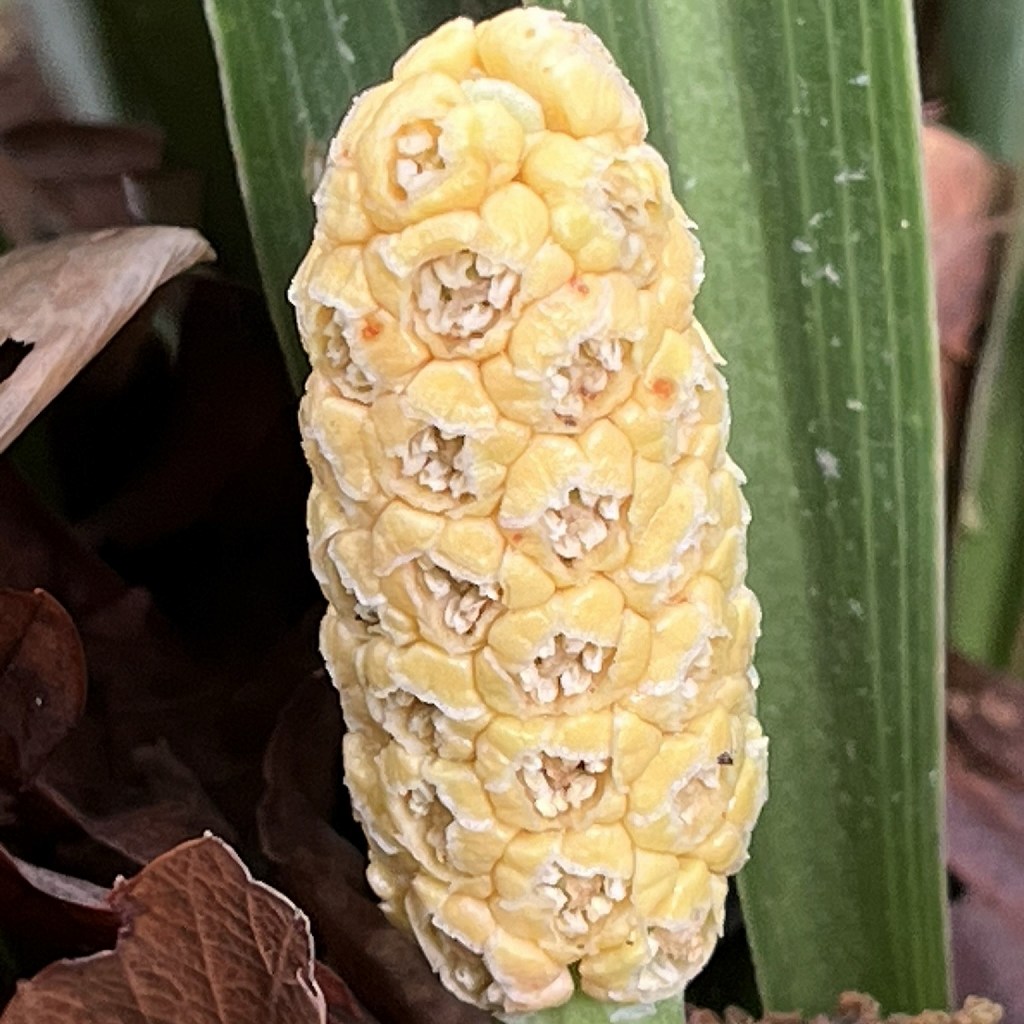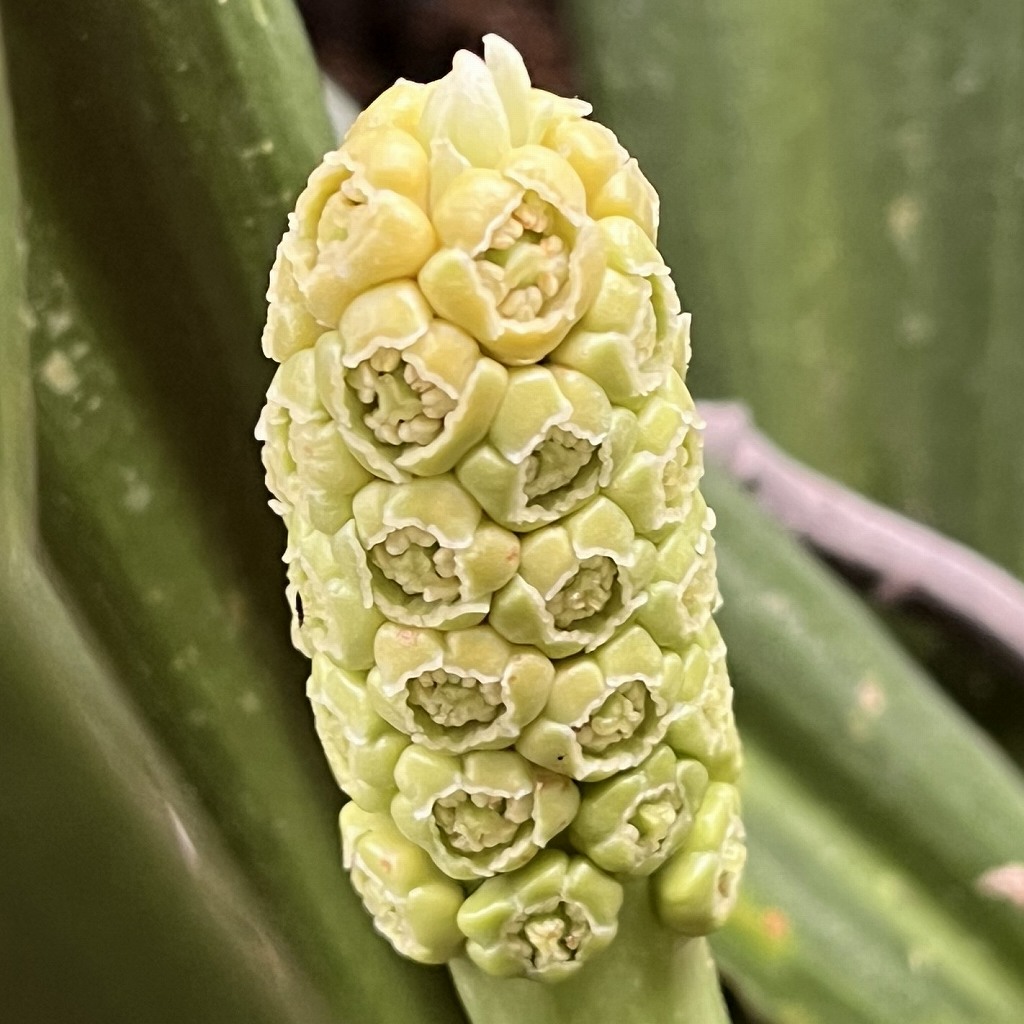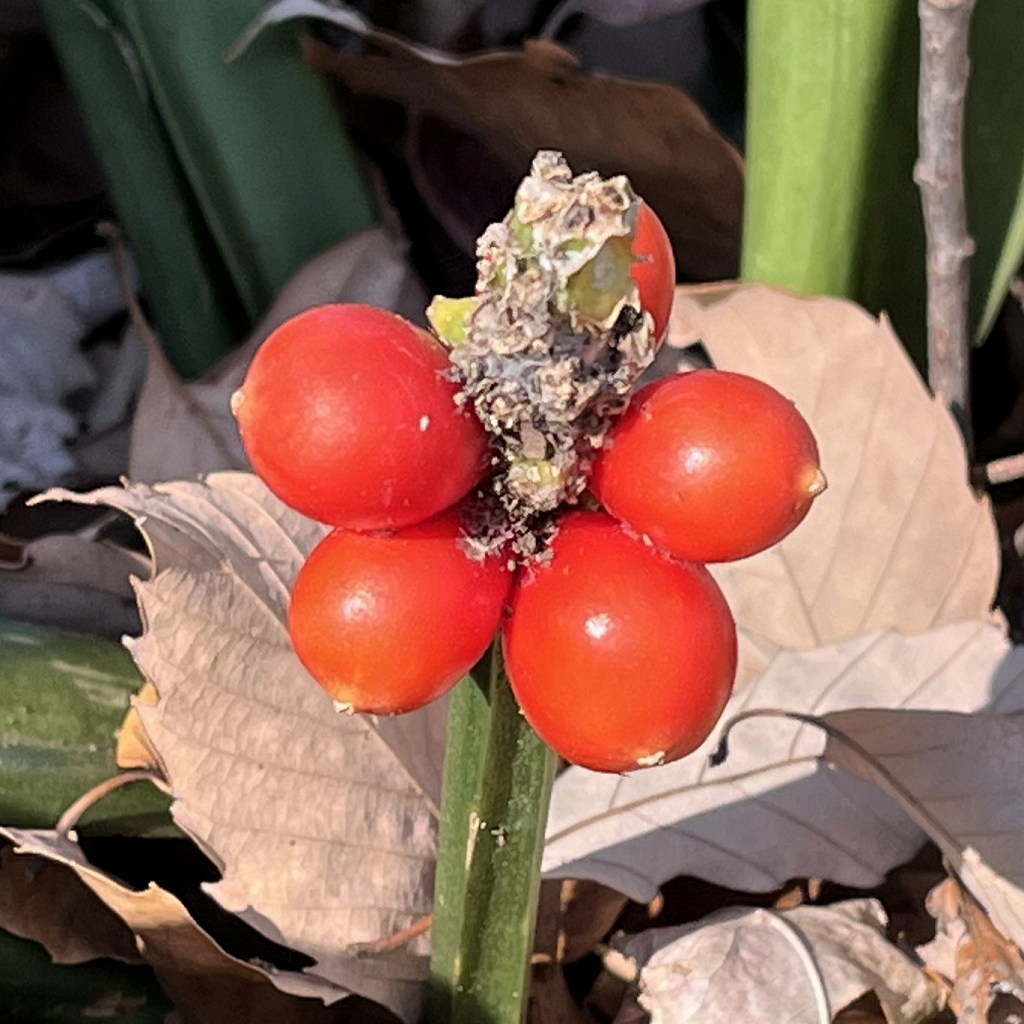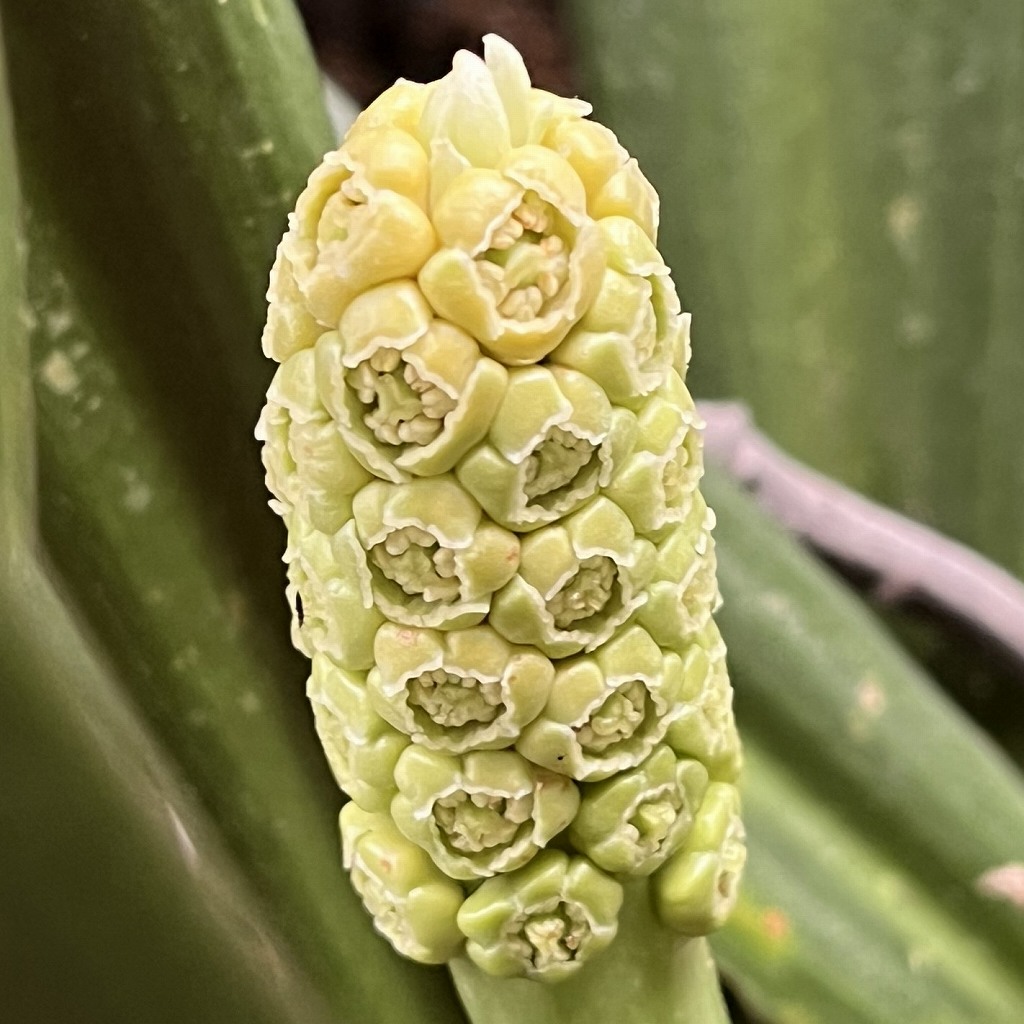オモトの花穂は淡い黄緑色の円筒形で、花被片6枚の小花が密生。蝸牛のような陸貝が花粉の送受を媒介し、光沢のある丸い液果が熟します。
The flower spikes of Sacred Lily are pale yellow-green and cylindrical, and small flowers with 6 perianths grow densely. Land molluscs such as the cochlea act as pollinators, and glossy round berries ripen.
【仮名】オモト
【和名】万年青
【英名】Sacred Lily
【学名】Rohdea japonica
【誕生】01/ 24, 12/ 19
【開花】05, 06月
【花色】White
オモト
オモトの概要

オモトはキジカクシ科の常緑多年草です。原産地は日本で、本州から四国、九州まで分布。山地の湿ったところに自生する一方、古くから庭植えや鉢植えで親しまれてきました。江戸時代に栽培が本格化して育種改良も進み、品種の数も1000以上。花言葉は「長寿」「長命」などです。
オモトの名前

オモトの名前の由来は「御許」という霊山で、大分県北部にある昔の名産地。神道の女神「比売大神」の降臨地です。もう1つの由来は「大本」で、根茎が大きく太いから。和名「万年青」は漢名に由来し、葉が萎れることなく緑色を保ち、株が永遠に生き続けるよう見えるからです。
オモトの姿形

オモトの葉は線形で幅が広く、革質で厚く、縁が大きく波打ち、地際の根茎から直に生えます。花穂は淡い黄緑色の円筒形で、花被片6枚の小花が密生し、蝸牛や蛞蝓のような陸貝が花粉の送受を媒介。花後は緑色で光沢のある丸い液果を結び、熟すと赤色または黄色へと変わります。
オモトの種類

オモトには葉の大きさで3つの系統があります。「大葉」は原種に近くて迫力があり、別名「薩摩万年青」とも。「小葉」は葉が厚く、「羅紗系統」とも呼ばれます。「中葉」は葉が薄く、種類が豊富。「一文字」「千代田斑」「獅子」「胡麻斑」「縞甲竜」「裏芸」などがあります。
オモトの利用

オモトは根茎や葉が生薬として強心、利尿、解毒に用いられました。実際、強心配糖体のロデインやロデニン、ロデキシンを含有。ただし、これらの成分は毒性があり、摂取により悪心、嘔吐、頭痛、不整脈、血圧低下のほか、全身痙攣後に死亡する恐れもあるので、注意が必要です。
Sacred Lily

Sacred Lily is an evergreen perennial plant belonging to the Asparagaceae family. The place of origin is Japan, distributed from Honshu to Shikoku and Kyushu. While it grows naturally in damp places in mountains, it has long been popular in gardens and potted plants. Cultivation began in earnest in the Edo period, and breeding and improvement progressed, with more than 1,000 varieties. The language of flowers is “longevity” etc.
The Japanese name of Sacred Lily comes from the sacred mountain, which used to be a famous production area in the northern part of Oita Prefecture. It is the descending place of the Shinto goddess. Another mean is that the rhizome is large and thick. The Chinese name means that the leaves do not wilt and remain green, and the plant looks like it has been living eternally.
The leaves of Sacred Lily are linear, broad, leathery, thick, with wide wavy margins, and grow directly from the rhizome at the ground level. The flower spikes are pale yellow-green and cylindrical, and the florets with 6 perianth tepals grow densely. After flowering, it bears green, glossy round berries that turn red or yellow when ripe.
There are three types of Sacred Lily, depending on the size of the leaves. “Big leaf” is close to the original species and has a powerful effect. “Small leaf” has thick leaves and is also called “Woollen cloth”. “Middle leaf” has thin leaves and many varieties.
Rhizomes and leaves of Sacred Lily were used as herbal medicines for cardiotonic, diuretic and detoxification. In fact, it contains the cardiac glycosides rhodein, rhodenine, and rodexin. However, these ingredients are toxic, and ingestion may cause nausea, vomiting, headache, arrhythmia, hypotension, and even death after generalized convulsions, so caution is required.



